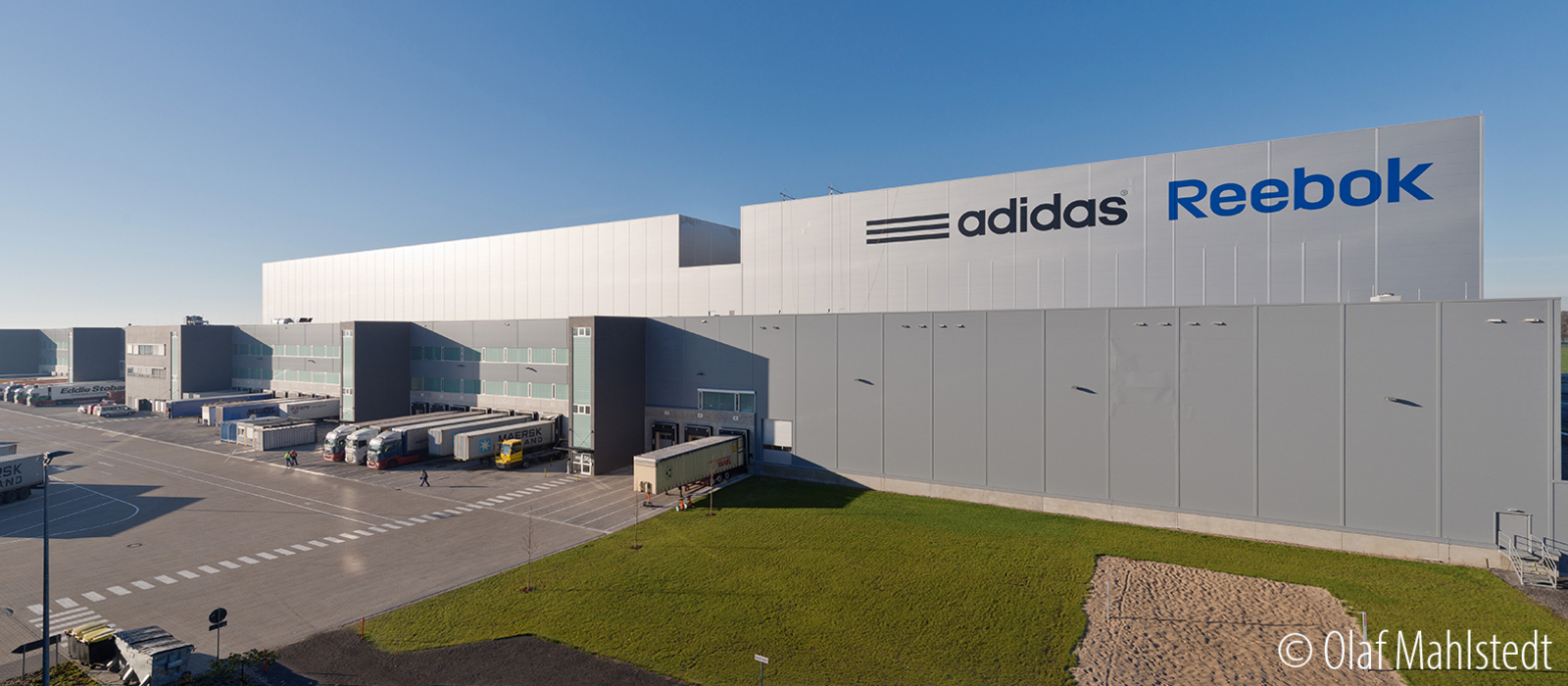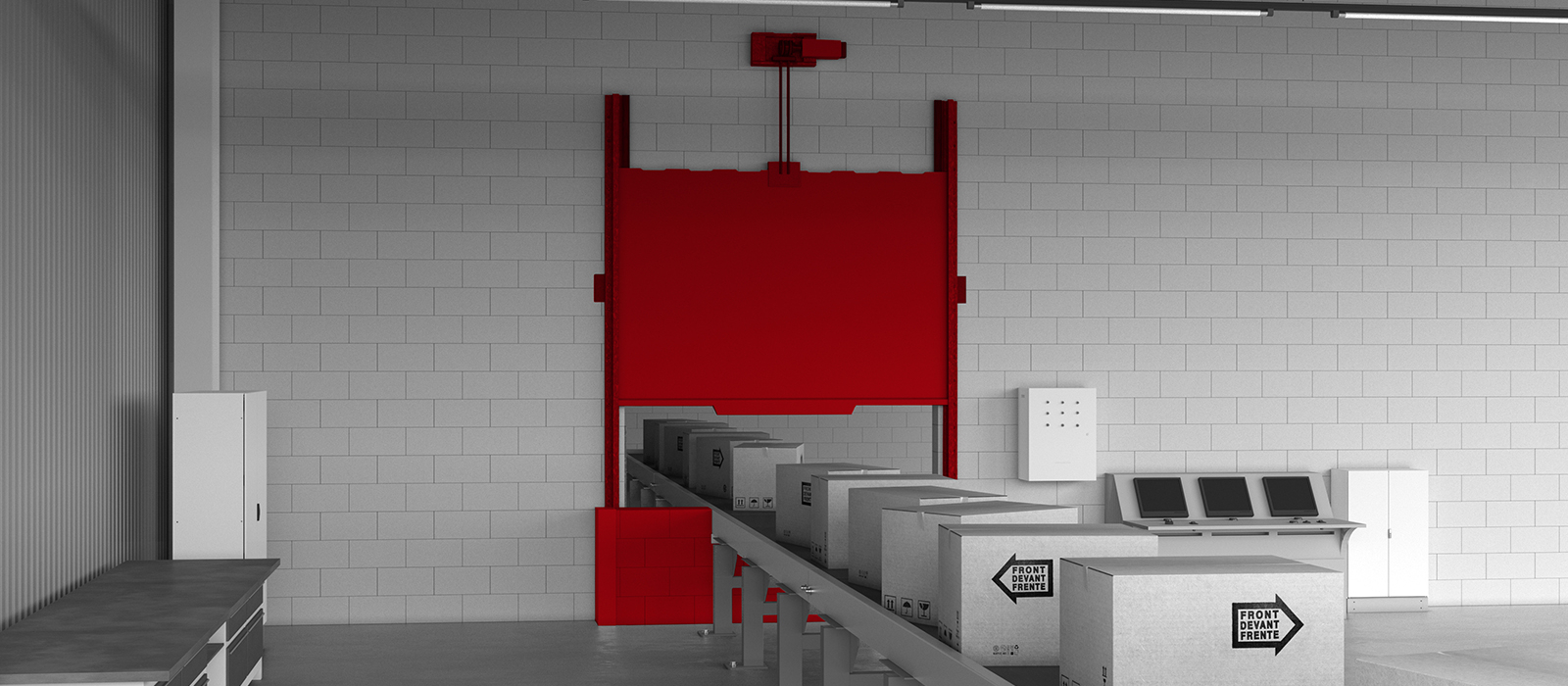
GCC, ein Förderanlagenabschluss für (fast) alle Fälle
Über 40 Jahre ist es her, dass Firmengründer Dr.-Ing. Jochen Stöbich den ersten Förderanlagenabschluss (FAA) entwickelte. Heute ist STÖBICH führend im vorbeugenden baulichen Brandschutz und entwickelt Produktinnovationen wie den Global Conveyor Closure (GCC).
Zu finden ist er u. a. im Logistikzentrum des Markenschuhherstellers adidas in Rieste, wo er die Förderanlage brandschutztechnisch sichert: Die Rede ist vom GCC, dem Global Conveyor Closure. Conveyor Closure (engl.) bedeutet wortwörtlich „Verschluss des Förderbandes“. Im Brandfall wird der Alarm ausgelöst und der GCC verschließt automatisch die entsprechende Öffnung in der Förderanlage. Dadurch verhindert er, dass sich die Flammen und Brandgase auf andere Abschnitte der Produktionshalle ausbreiten, so wie bei dem Großbrand bei Bahlsen im Jahr 1978. Dieses Inferno gilt als Urknall des STÖBICH Imperiums, weil es Dr.-Ing. Jochen Stöbich zur Entwicklung des ersten Förderanlagenabschlusses inspirierte.
Das „Global“ im Produktnamen bezieht sich übrigens auf die Einsetzbarkeit des Förderanlagenabschlusses: Der GCC ist ein europäisches geprüftes Produkt nach EN 1366-7 bis zu einer geforderten Schutzklassifikation von EI 90 und damit ein Global bzw. European Player unter den FAAs.
Was ist das Besondere am GCC?
Der GCC ist ein sogenannter Feuerschutzabschluss im Zuge bahngebundener Förderanlagen für a) getrennte und b) durchlaufende Fördertechnik. a) bedeutet, dass die Fördertechnik im Schließbereich des FAA getrennt ausgeführt wird (notwendiges Spaltmaß ca. 80 mm). Im Fall von b) wird die Fördertechnik ungetrennt durch den FAA geführt. Hier besteht dann der FAA aus einem Schieberblatt oberhalb der Fördertechnik als bewegliches Teil und einer Fördersystemabschottung (kurz: Festfeld) unterhalb der Förderebene.
Welche Vorteile bietet der GCC?
- wird vor Ort aus fertigen Elementen montiert (Schieber, Führungen, Verkrallung, Antriebseinheit) - lässt sich dadurch leicht transportieren - passt sich entsprechend an die jeweilige Einbausituation und Fördertechnikvariante an - in vertikaler und horizontaler Schließrichtung erhältlich
Das schlanke, platzsparende System benötigt nur eine geringe Überdeckung auf der Wand um die Öffnung herum. Herausragendes Merkmal des GCC ist die sehr dünne Schieberblattstärke. Selbst kleine Fördermedien für Behälter oder Kartons können so als getrennte Fördertechnik ausgeführt werden, da nur eine sehr kleine Trennstelle benötigt wird. Hier sind dann auch mehrere Förderstrecken durch eine Wandöffnung ohne Probleme zu realisieren. Das macht den GCC so ideal für unterbrochene Fördertechnik, aber auch für Rollen-, Gurt- und Kettenförderer.
➥Technische Daten und weitere Infos zum GCC geben einen guten Einblick in das Produkt. Bei konkreten Fragen können Sie uns auch gerne direkt ➥ kontaktieren.


